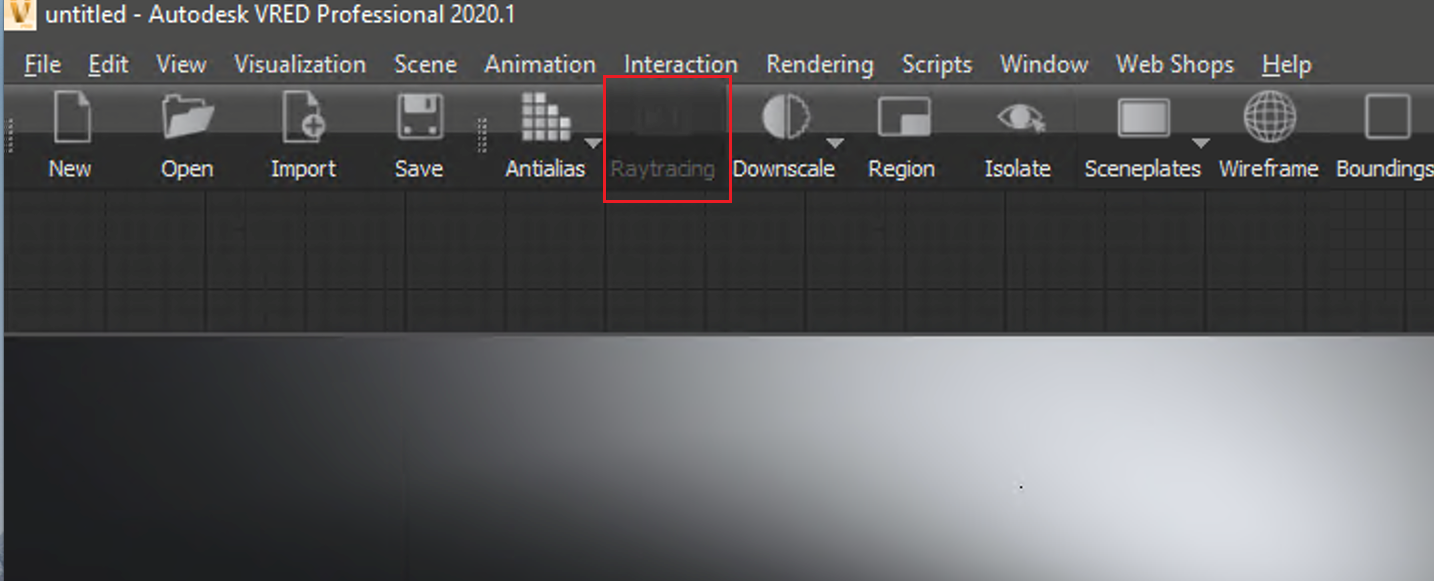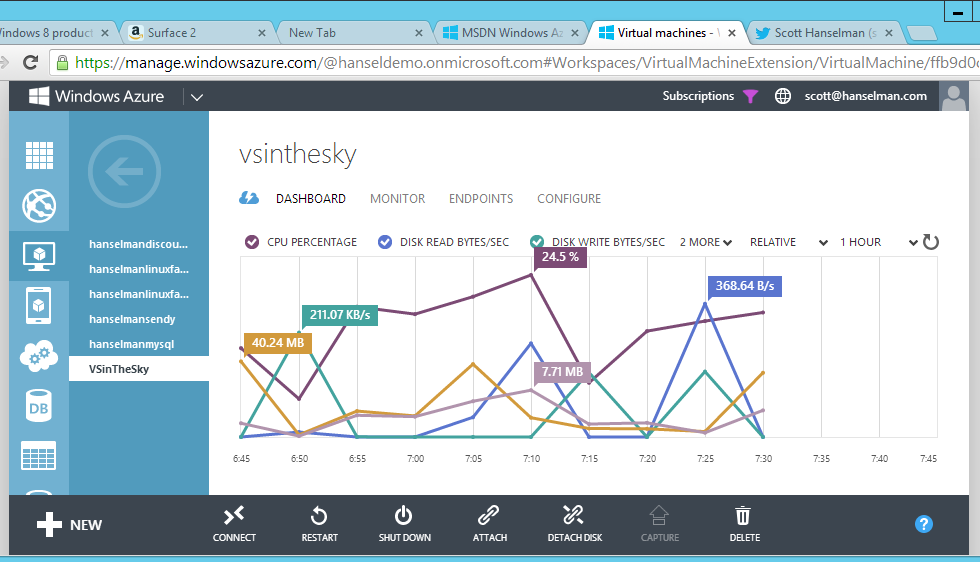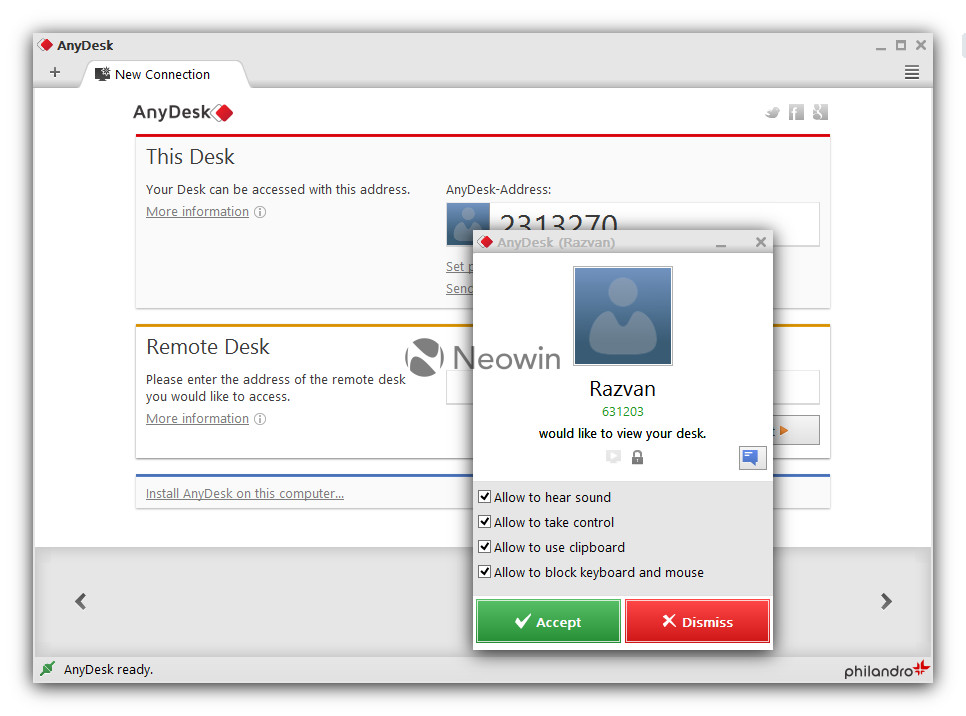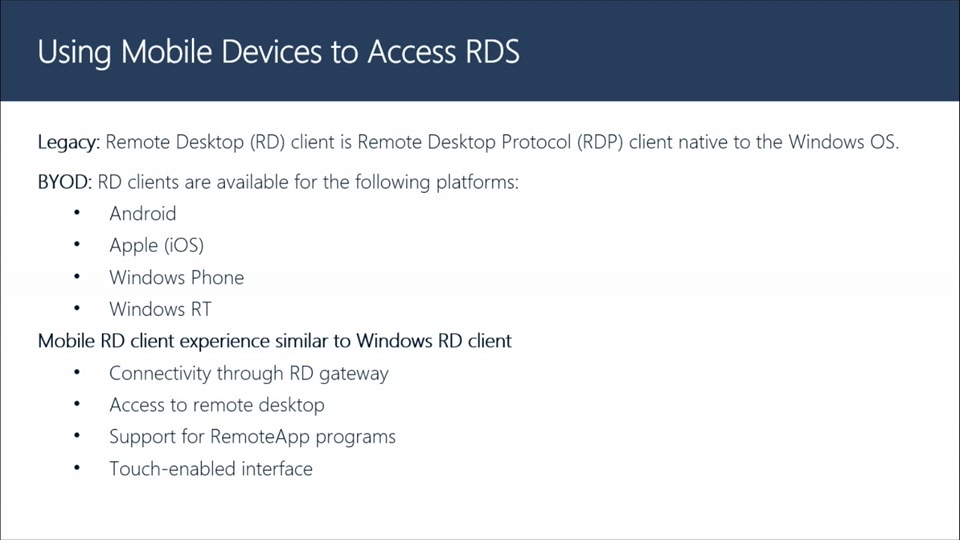To use Remote Desktop on Windows 10, enable it within the computer's settings; this action will then allow other computers to remotely connect to your computer to gain access. After Remote Desktop is enabled, verify that your user account has permission to access the computer. Use Remote Desktop to connect to the PC you set up: On your local Windows 10 PC: In the search box on the taskbar, type Remote Desktop Connection, and then select Remote Desktop Connection. In Remote Desktop Connection, type the name of the PC you want to connect to (from Step 1), and then select Connect. You can also skip the VPN and expose the Remote Desktop server directly to the Internet by setting your router to forward Remote Desktop traffic to the PC being accessed. Obviously, doing this opens you up to potential attacks over the internet, so if you go this route you’ll want to understand the risks.
In Windows 10, click the Start button, scroll down the list of apps, open the folder for Windows Accessories, and click the shortcut for Remote Desktop Connection. In Windows 8.1, press the Win. So read and learn as the dude guides you through this step by step. A lab we will build, a proof of concept Remote Desktop Services node, with Remote Applications. If you don’t have a Windows RT Tablet, fear not, you can reproduce the steps in a Windows 8.1 VM as well. Installing the RDS Server. Install Windows Server 2012.


Mobile workers are always looking for ways to gain time and increase productivity. Splashtop continues to innovate and lead by optimizing our top performing remote desktop software for the latest hardware platforms, including Surface tablets running Windows RT. Now remote workers can easily access and work within MS Office in addition to large 3-D, design, and video applications from their Surface tablets and all Windows 8 devices. This is a breakthrough that delivers new conveniences and efficiencies to millions of Surface and Win8 users who now have remote access to Windows or Mac applications, games, multimedia content, and all their files without the need to sync files or data.

Windows Rt 8.1 Remote Desktop
Splashtop 2 for Windows RT is available now at http://apps.microsoft.com/windows/en-us/app/splashtop-2-remote-desktop-for/3523093b-4869-4076-8c93-c1629c74b861
-->Applies to: Windows 10, Windows 8.1, Windows Server 2019, Windows Server 2016, Windows Server 2012 R2
You can control a remote PC by using a Microsoft Remote Desktop client. The client can run on almost any device, including on your mobile smartphone. The client gives you the same powers you would have if you could reach the PC's keyboard. Through the client, you can:

Remote Desktop Connection
- Operate the apps that are installed on the PC.
- Access the files and network resources of the PC.
- Leave the apps open when you end the client.
Before you start, see the supported configuration article. The article discusses the PC configurations that the Remote Desktop clients can connect to. Also see the client FAQ article.
The following client apps are available:

| Client | Get the app | Documentation | Latest version |
|---|---|---|---|
| Windows Desktop | Windows Desktop client | Get started, What's new | 1.2.1844 |
| Microsoft Store | Windows 10 client in the Microsoft Store | Get started, What's new | 1.2.1810 |
| Android | Android client in Google Play | Get started, What's new | 10.0.10 |
| iOS | iOS client in the App Store | Get started, What's new | 10.2.5 |
| macOS | macOS client in the App Store | Get started, What's new | 10.6.1 |
Configuring the remote PC
To configure your remote PC before accessing it remotely, see Allow access to your PC.
Remote Desktop On Windows 10
Remote Desktop client URI scheme
Windows 10 Surface Remote Desktop Scaling
You can integrate features of Remote Desktop clients across platforms by enabling a Uniform Resource Identifier (URI) scheme. Learn about the supported URI attributes that you can use with the iOS, Mac, and Android clients.
